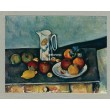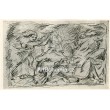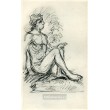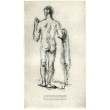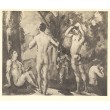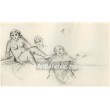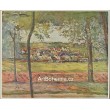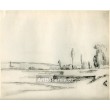Košík
0
x
Produkty
(prázdný)
Žádné díla
Bude determinováno
Dopravné a balné
0 Kč
Celkem
Produkt byl úspěšně přidán do nákupního košíku
Počet
Celkem
0 ks zboží.
1 dílo v košíku.
Za díla:
Doručení a balné:
Bude determinováno
Celkem
Kategorie
- grafiky/tisky
- obrazy
- kresby
- plakáty
- fotografie
- exlibris
- bibliofilie
- knihy/katalogy
- starožitnosti
- sochy/plastiky
- sklo
-
Hnutí
- abstrakce
- art-deco
- čs.avantgarda/moderna
- expresionismus
- fauvismus
- impresionismus
- kubismus
- naivní umění
- op-art
- poetismus
- pop-art
- realismus
- secese
- sociální kritika
- soudobá tvorba
- surrealismus
- světová avantgarda/moderna
- Škola prof. Albína Brunovského
- Škola prof. Zdeňka Sklenáře
- Škola prof.Julia Mařáka - mařákovci
- Žánr
- Zprávy/NEWS
- Doporučujeme
Nová díla
-

Johanka z Arku
4 114 Kč -

Kvetoucí strom
2 662 Kč -

Hvězdy
4 598 Kč
-

Krajina se slavíkem a měsícem (1921)
4 501 Kč -40% 7 502 Kč
Hnutí
- abstrakce
- art-deco
- čs.avantgarda/moderna
- expresionismus
- fauvismus
- impresionismus
- kubismus
- naivní umění
- op-art
- poetismus
- pop-art
- realismus
- secese
- sociální kritika
- soudobá tvorba
- surrealismus
- světová avantgarda/moderna
- Škola prof. Albína Brunovského
- Škola prof. Zdeňka Sklenáře
- Škola prof.Julia Mařáka - mařákovci
Žánr
NEJŽÁDANĚJŠÍ UMĚLCI
- Anderle Jiří
- Augustovič Peter
- Benca Igor
- Beneš Karel
- Bím Tomáš
- Born Adolf
- Brun Robert
- Brunovský Albín
- Boštík Václav
- Bouda Cyril
- Bouda Jiří
- Braque Georges
- Brázda Jiří
- Buffet Bernard
- Cézanne Paul
- Čapek Josef
- Čápová Hana
- Dalí Salvador
- Demel Karel
- Dudek Josef
- Dufy Raoul
- Effel Jean
- Felix Karol
- Filla Emil
- Giacometti Alberto
- Grosz George
- Chagall Marc
- Istler Josef
- Janeček Ota
- Jiřincová Ludmila
- Kandinsky Wassily
- Kĺúčik Peter
- Komárek Vladimír
- Kulhánek Oldřich
- Kupka František
- Lada Josef
- Lhoták Kamil
- Matisse Henri
- Miró Joan
- Mucha Alfons
- Muzika František
- Picasso Pablo
- Pileček Jindřich
- Reynek Bohuslav
- Sukdolák Pavel
- Suchánek Vladimír
- Svolinský Karel
- Šíma Josef
- Špála Václav
- Švabinský Max
- Švengsbír Jiří
- Tichý František
- Toulouse-Lautrec Henri de
- Toyen
- Trnka Jiří
- Váchal Josef
- Vik Karel
- Warhol Andy
- Zábranský Vlastimil
- Zoubek Olbram
- Zrzavý Jan
Seznam děl umělce Cézanne Paul
(1839-1906) Francouzský malíř. Jeho otec byl bankéř; s matkou se oženil, když bylo Paulovi pět let. Od dětství měl Cézanne prchlivou, vášnivou povahu. Mládí prožil v Aix s přítelem E. Zolou; oba psali básně. Prvního uměleckého školení se mu dostalo na mě
(1839-1906) Francouzský malíř. Jeho otec byl bankéř; s matkou se oženil, když bylo Paulovi pět let. Od dětství měl Cézanne prchlivou, vášnivou povahu. Mládí prožil v Aix s přítelem E. Zolou; oba psali básně. Prvního uměleckého školení se mu dostalo na městské École des Beaux-Arts v Aix. Otec chtěl mít ze syna svého nástupce, a proto ho dal studovat práva. Teprve 1861 mu dovolil odjet do Paříže, kde navštěvoval Académie Suisse na Ile de la Cité a studoval staré mistry v Louvru; po půl roce se však navrátil do Aix a pokračoval ve studiu práv. Příští rok se Cézanne vrací znovu do Paříže, kde se spřátelil s C. Pissarrem a J. B. Guillauminem. Na École des Beaux-Arts nebyl přijat; jeho oblíbenými mistry byli P. P. Rubens, P. Veronese a N. Poussin, obdivoval na výstavách E. Maneta.Žil střídavě v Paříži a Aix, občas pobýval v L‘Estaque u Marseille.
V raném romantickém období (1860 až 1870) namaloval několik barokizujících kompozic na mytologická a náboženská témata, řadu podobizen členů rodiny a přátel, první zátiší a krajiny, malované v ateliéru podle skic v plenéru; obrazy jsou provedeny v tmavém koloritu pastózní technikou, při níž používal špachtle; přes zřetelné vlivy G. Courbeta, H. Daumiera, E. Delacroixe a Maneta projevují vlastně svou brutalitou opozici proti všemu. Pro salón v otcově sídlu v Jas de Bouffan provedl dekorativní obrazy Čtyř ročních dob, parodie na akademismus, jež ironicky podepsal Ingresovým jménem. 1870 se skrýval před odvodem v Jas de Bouffan a pak v L‘Estaque, kde se seznámil s Hortensií Fiquetovou, jež se stala jeho milenkou a matkou jediného syna; svůj poměr Cézanne skrýval před svým otcem, na němž byl finančně zcela závislý. S Hortensií se oženil teprve po otcově smrti 1886, když po něm zdědil 400 000 Franků a sídlo v Jas de Bouffan a tím se konečně zbavil existenčních starostí.
1872—74 pobýval Cézanne u Pissarra v Pontoise a u doktora Gacheta v Auvers pod Pissarrovým vlivem přejal impresionistickou světlou malbu barevnými skvrnami; od té doby maloval v přírodě před motivem. Nejvýznamnější obraz tohoto období, Dům oběšencův, 1873, vystavil 1874 na první výstavě impresionistů u fotografa Nadara na Boulevard des Capucins; obraz zakoupil hrabě A. Dona. Cézanne obeslal i impresionistickou výstavu 1877, protože se však jeho díla setkala opět s nepochopením, přestal nakonec vystavovat a stal se samotářem. Od 1874 žil u rodičů v Aix, kam nakrátko 1877 přivedl svou družku i syna; ale pro neshody s otcem musel odejít do L‘Estaque; otec ho dokonce několik měsíců přestal podporovat. Všechny obrazy, které posílal do Salónu, byly odmítnuty; jen 1882 byl na přímluvu jeho přítele Guillemeta vystaven jeden Cézannův portrét. Zklamán neuznáváním svého umění, usadil se trvale v Provenci a vášnivě se oddal malbě. 1883 jezdil společně s A. Monticellim po Provenci. 1886 se rozešel se Zolou, který zneužil Cézannovy osoby a díla k vystižení typu zkrachovaného malíře ve svém románu Dílo. Po 1880 začíná nové Cézannovo období, v němž překonal impresionismus a našel svůj osobitý sloh; maluje krajiny s horou Ste Victoire, jež dominuje městu Aix, zátiší, v němž dával přednost jablkům, protože se nekazila během dlouhého pracovního postupu, a podobizny přátel.
V pěti variantách vytvořil kompozici Hráčů karet. Proti pastózní, hmotné malbě raného období se barva stává stále průsvitnější, až se nátěry omezí na akvarelově průsvitné, čisté barevné Jazurní tóny; úměrně se změnou techniky roste spirituálnost malby.
V cizině byl pouze 1881 ve Švýcarsku. 1895 si postavil chatu v Cháteau Noir, kde v posledním desetiletí rád maloval; v témže roce mu uspořádal Vollard první soubornou výstavu v Paříži; vystavoval také několikrát v Salónu nezávislých a na Podzimním salónu. 1902 si zřídil atelier v Chemin des Lauves, v němž je dnes Cézannovo muzeum. 1904 se seznámil s E. Bernardem, jenž své rozhovory s Cézannem, podnětné pro další vývoj moderního umění, uveřejnil 1904. Zemřel na následky nachlazení, jež si uhnal při malování v plenéru. Jeho posmrtná výstava v Podzimním salónu 1907 (56 obrazů) měla velký úspěch u mladých moderních malířů, jimž se stal vzorem; většina jeho obrazů byla tehdy v majetku obchodníka s barvami Otce Tanguyho. Cézanne patří k nejvýznamnějším osobnostem moderního umění; bývá právem nazýván „otcem moderního malířství“. Svým temperamentem romantik, usiloval vytvořit klasický malířský styl, který by měl řád umění starých mistrů P. Veronese a N. Poussina, jimiž se nepřestával inspirovat. Pissarro uvolnil Cézannův koloristický talent a pozorovatelský smysl; od impresionistů přejal i malbu čistými, světlými barevnými tóny, ale svým zájmem o vnitřní strukturu věcí impresionismus vlastně překonával; předmět, u impresionistů rozpuštěný ve světelné atmosféře, u něho znovu tvarově krystalizuje. Sám říkal, že udělal z impresionismu něco solidního, umění pro muzea. Optický názor na přírodu, jímž se vyznačuje impresionismus, se mění v neoptický, neperspektivní systém, jenž podřizuje viditelný svět výtvarné zákonitosti. Cézannův obraz představuje harmonické vyrovnání mezi abstraktní malířskou formou a optickými jevy přírody. Modelaci nahradil „modulací“ (Cézannův termín), tj. takovým řazením čistých barevných tónů v různých světelných odstínech vedle sebe, aby vznikl na sítnici divákova oka dojem prostorové hloubky. Organizace obrazových plánů podle poměrů barev, jejich vyvažování v obrazové ploše a organizace této plochy jako samostatného organismu a nositele obsahu vytváří autonomní svět obrazu.
Vyňato z Encyklopedie světového malířství - Autorský kolektiv pod vedením PhDr. Sávy Šabouka DrSc.; nakl. Academia ČSAV 1975.
In: http://www.artchiv.cz/show.php3?action=explore_bio&id=121&session=04nd10r10y07h53t2006
* * * * * Paul Cézanne was probably the greatest painter of the last 100 years. He was born in Aix-en-Provence, France, the son of a wealthy banker and tradesman, and was educated at the College Bourbon where he became friendly with author Émile Zola. The friendship, which meant a great deal to Cézanne, lasted until the publication of Zola's L'oeuvre in 1886: the character of Claude Lantier seemed a travesty of Cézanne, and not only to Cézanne.
In 1861, after abandoning the study of law, Cézanne went to Paris, where he met Pissarro and from 1862 he devoted himself to painting living in Paris until 1870. The Franco-Prussian War drove him to L'Estaque and in 1872 he joined Pissarro at Pontoise. In the 1860s, his ardent Southern temperament expressed itself in a series of more or less erotic and melodramatic pictures such as the Rape (1867) or the Murder (Liverpool) of similar date which were not unnaturally received with no enthusiasm. While closely associated with Pissarro, Cézanne began to paint landscape in an Impressionist technique and he exhibited at the first Impressionist Exhibition of 1874.
One of his pictures was among those that incurred the greatest public displeasure. This was the most extraordinary of all his erotic fantasies, the Modern Olympia (now in the Louvre), so called as a rather dubious compliment to Manet: it represents a fat squatting female being disrobed by a negress while a man (probably Cézanne himself) watches, with interest. In the midst of the chaste Impressionist landscapes the effect must have been startling, particularly as these pictures are painted with great violence and the color is often piled on with a paletteknife.
During the 1870s, Cézanne digested the theories of color and light which the Impressionists were then developing: in the 3rd Impressionist Exhibition (1817) he showed sixteen pictures and one critic praised them highly. Gradually, he calmed down the exuberant Romanticism of his temperament and abandoned a Delacroix-like technique, to which he was not really suited. His great achievements lay in the direction of an ever more subtle analysis of color and tone, totally different from the Impressionists' analysis in that they sought to capture the surface, the impression, and therefore painted quickly. Cézanne's analysis was infinitely prolonged and laborious because he sought to use color as a means of modeling and as the ultimate expression of the underlying forms of visible objects. In this he was, of course, following classical prototypes and some of his recorded sayings are of great importance. He said that he "wanted to do Poussin again, from Nature" and that he wanted "to make of Impressionism something solid and durable, like the art of the Museums". This was clearly because Impressionism was lacking in formal qualities, but "when color has its greatest richness then form has its plenitude": in particular, the basic ideas of Cubism have been claimed to be implicit in his teaching that the painter ought to look for the cone, the sphere, and the cylinder in Nature.
Cézanne himself was no theorist and constant insults from public and critics made him very chary of exposing himself. When his father died in 1886, he found himself rich and able to live in seclusion in Provence, mainly at the Jas de Bouffan, near Aix, a house his father had bought and which once contained some very early Cézanne decorations. In 1890, he was invited to exhibit in Brussels by Les XX, in 1895 he had his first big show, and from about 1900 his genius was fairly widely recognized.
In the last years of his life he returned to some of his favorite early themes - in particular, the big compositions of Bathers, with nude figures in a landscape setting. His great contribution was to show that color and tone values must be considered as one thing and not two; in doing this, he made Impressionism into something solid, like Poussin. Because his analysis was pursued with agonizing care many of his pictures were never finished, he is said to have abandoned a portrait of Vollard the dealer, after more than a hundred sittings, with the remark that he was displeased with the shirt-front! Naturally, still-life and landscape offered the greatest freedom in this respect and most of his flowerpieces were probably painted from artificial flowers; his few portraits were of himself or of people whose sittings could be protracted almost indefinitely.
In: http://www.centaurgalleries.com/Artists/Artist.cfm?ArtistID=00028
* * * * * Cézanne, Paul
(b Aix-en-Provence, 19 Jan 1839; d Aix-en-Provence, 23 Oct 1906). French painter. He was one of the most important painters of the second half of the 19th century. In many of his early works, up to about 1870, he depicted dark, imaginary subjects in a violent, expressive manner. In the 1870s he came under the influence of IMPRESSIONISM, particularly as practised by Camille Pissarro, and he participated in the First (1874) and Third (1877) Impressionist Exhibitions. Though he considered the study of nature essential to painting, he nevertheless opposed many aspects of the Impressionist aesthetic. He epitomized the reaction against it when he declared: ‘I wanted to make of Impressionism something solid and enduring, like the art in museums.’ Believing colour and form to be inseparable, he tried to emphasize structure and solidity in his work, features he thought neglected by Impressionism. For this reason he was a central figure in POST-IMPRESSIONISM. He rarely dated his works (and often did not sign them either), which makes it hard to ascertain the chronology of his oeuvre with any precision. Until the end of his life he received little public success and was repeatedly rejected by the Paris Salon. In his last years his work began to influence many younger artists, including both the Fauves and the Cubists, and he is therefore often seen as a precursor of 20th-century art.
There are more than 45,000 articles in The Grove Dictionary of Art. To access the rest of this article, including the bibliography, subscribe to www.groveart.com. To find out more about this subject, click on a related article below and subscribe to www.groveart.com
In: http://www.artnet.com/library/01/0156/T015638.asp
Cézanne, Paul (1839-1906), French Post-Impressionist painter, often called the father of modern art, who strove to develop an ideal synthesis of naturalistic representation, personal expression, and abstract pictorial order.
Among the artists of his time, Cézanne perhaps has had the most profound effect on the art of the 20th century. He was a major influence on several of the most illustrious modern painters, inluding Henri Matisse, who admired his use of colour, and Pablo Picasso, who developed Cézanne's flat compositional structure into the Cubist style. During the greater part of his own lifetime, however, Cézanne was largely ignored, and he worked in isolation. He distrusted critics, had few friends, and, until 1895, exhibited only occasionally. He was alienated even from his family, who found his behaviour peculiar and failed to appreciate his revolutionary art.
Early Life and Work
Cézanne was born on January 19, 1839, in the southern French town of Aix-en-Provence, the son of a prosperous hat retailer who later became a banker. His boyhood companions included Émile Zola. Like Zola, Cézanne developed artistic interests at an early age, much to the dismay of his father. In 1861, after a number of bitter family disputes, the aspiring artist was given a small allowance and sent to Paris, where Zola had already gone, to study art at the Académie Suisse. He was immediately drawn to the more radical elements of the Parisian art world. He especially admired the Romantic painter Eugčne Delacroix and, among the younger artists, Gustave Courbet and Édouard Manet, both of whom exhibited paintings that most of their contemporaries found shocking in style no less than in subject-matter.
Influence of the Impressionists
Many of Cézanne's early works are clumsy but powerful, and painted in dark tones applied with heavy, fluid pigment, and his subjects are often emotionally charged, in the spirit of Romanticism. Just as Zola pursued his interest in the Realist novel, however, Cézanne also gradually developed a commitment to the representation of contemporary life, painting the world that he observed without idealization or stylistic affectation. The most significant influence on the work of his early maturity proved to be Camille Pissarro, an older but as yet unrecognized painter who lived with his large family at Pontoise, in a rural area outside Paris (Cézanne himself lived there from 1872 to 1873). Pissarro not only provided the moral encouragement that the insecure Cézanne required, but he also introduced him to the new Impressionist technique for rendering the effects of outdoor light. Along with Claude Monet, Auguste Renoir, and a few other painters, Pissarro had developed a style that involved working outdoors (en plein air), using small touches of pure colour, generally without the use of preparatory sketches or linear outlines. In such a manner these artists hoped to capture the most transient natural effects as well as their own equally transient visual interpretation of nature. Under Pissarro's tutelage, during his brief period at Pontoise, Cézanne shifted rapidly from dark tones to bright hues and began to concentrate on scenes of farmland and rural villages.
Return to Aix
Although he seemed less technically accomplished than the other Impressionists, Cézanne was accepted by the group and exhibited with them in 1874 and 1877. In general the Impressionists had only limited commercial success, and Cézanne's works were given the harshest critical reception. He drifted away from many of his Parisian contacts during the late 1870s and 1880s and spent much of his time in his native Aix. After 1882 he did not work closely again with Pissarro. In 1886 Cézanne became embittered over what he took to be thinly disguised references to his own failures in Zola's novel, L'Oeuvre. As a result, he broke off relations with his oldest supporter. In the same year, he inherited his father's wealth and finally, at the age of 47, became financially independent, though remaining quite isolated socially.
Cézanne's Use of Colour
This isolation and Cézanne's concentration and singularity of purpose may account for the remarkable development his style underwent during the 1880s and 1890s. In this period, he continued to make studies from nature in brilliant Impressionist colours, but he gradually simplified his application of the paint to the point where he seemed able to create a sense of volume with juxtaposed strokes of pure colour. Critics eventually argued that Cézanne had discovered a means of rendering both nature's light and nature's form with a single application of colour. He seemed to be reintroducing a formal structure that the Impressionists had abandoned, without sacrificing the sense of brilliant illumination that they had achieved. Cézanne himself spoke of “modulating” with colour rather than “modelling” with dark and light. By this he meant that he would replace an artificial convention of representation (modelling) with a more expressive system (modulating) that was closer still to nature, or, as the artist himself said, “parallel to nature”. For Cézanne, the answer to all the technical problems of Impressionism lay in a use of colour both more orderly and more expressive than that of his fellow Impressionists.
Cézanne's goal was, in his own mind, never fully attained. He left numerous works unfinished and destroyed many others although his surviving output (drawings and watercolours as well as oils) is nevertheless large. He complained of his failure at rendering the human figure, and indeed the great figural works of his last years—such as the Large Bathers (c. 1899-1906, Museum of Art, Philadelphia)—reveal curious distortions that seem to have been dictated by the rigour of the system of colour modulation that he imposed on his own representations. The succeeding generation of painters, however, eventually came to accept nearly all Cézanne's idiosyncrasies. That generation felt that the naturalistic goals of Impressionism had become formularized, and a new and original style, however difficult it might be, was needed to return a sense of sincerity and commitment to modern art.
Significance of Cézanne's Work
For many years, Cézanne's work was known only to his old Impressionist colleagues and to a few younger radical Post-Impressionist artists, including Vincent van Gogh and Paul Gauguin. In 1895, however, Ambroise Vollard, an ambitious Paris art dealer, arranged a show of Cézanne's works and, after the turn of the century, his paintings were seen in several exhibitions in Paris and elsewhere. By the time of his death (in Aix on October 22, 1906), he was acquiring a legendary status and, during the last years of his life, many younger artists travelled to Aix to observe him at work and to learn from him. Both his style and his theory remained mysterious and cryptic, however; to some he seemed a naďve primitive, while to others he was a sophisticated master of technical procedure. The intensity of his colour, coupled with the apparent rigour of his compositional organization, signalled to most that, despite the artist's own frequent despair, he had synthesized the basic expressive and representational elements of painting in a highly original manner.
In: MS Encarta
Zobrazit
V raném romantickém období (1860 až 1870) namaloval několik barokizujících kompozic na mytologická a náboženská témata, řadu podobizen členů rodiny a přátel, první zátiší a krajiny, malované v ateliéru podle skic v plenéru; obrazy jsou provedeny v tmavém koloritu pastózní technikou, při níž používal špachtle; přes zřetelné vlivy G. Courbeta, H. Daumiera, E. Delacroixe a Maneta projevují vlastně svou brutalitou opozici proti všemu. Pro salón v otcově sídlu v Jas de Bouffan provedl dekorativní obrazy Čtyř ročních dob, parodie na akademismus, jež ironicky podepsal Ingresovým jménem. 1870 se skrýval před odvodem v Jas de Bouffan a pak v L‘Estaque, kde se seznámil s Hortensií Fiquetovou, jež se stala jeho milenkou a matkou jediného syna; svůj poměr Cézanne skrýval před svým otcem, na němž byl finančně zcela závislý. S Hortensií se oženil teprve po otcově smrti 1886, když po něm zdědil 400 000 Franků a sídlo v Jas de Bouffan a tím se konečně zbavil existenčních starostí.
1872—74 pobýval Cézanne u Pissarra v Pontoise a u doktora Gacheta v Auvers pod Pissarrovým vlivem přejal impresionistickou světlou malbu barevnými skvrnami; od té doby maloval v přírodě před motivem. Nejvýznamnější obraz tohoto období, Dům oběšencův, 1873, vystavil 1874 na první výstavě impresionistů u fotografa Nadara na Boulevard des Capucins; obraz zakoupil hrabě A. Dona. Cézanne obeslal i impresionistickou výstavu 1877, protože se však jeho díla setkala opět s nepochopením, přestal nakonec vystavovat a stal se samotářem. Od 1874 žil u rodičů v Aix, kam nakrátko 1877 přivedl svou družku i syna; ale pro neshody s otcem musel odejít do L‘Estaque; otec ho dokonce několik měsíců přestal podporovat. Všechny obrazy, které posílal do Salónu, byly odmítnuty; jen 1882 byl na přímluvu jeho přítele Guillemeta vystaven jeden Cézannův portrét. Zklamán neuznáváním svého umění, usadil se trvale v Provenci a vášnivě se oddal malbě. 1883 jezdil společně s A. Monticellim po Provenci. 1886 se rozešel se Zolou, který zneužil Cézannovy osoby a díla k vystižení typu zkrachovaného malíře ve svém románu Dílo. Po 1880 začíná nové Cézannovo období, v němž překonal impresionismus a našel svůj osobitý sloh; maluje krajiny s horou Ste Victoire, jež dominuje městu Aix, zátiší, v němž dával přednost jablkům, protože se nekazila během dlouhého pracovního postupu, a podobizny přátel.
V pěti variantách vytvořil kompozici Hráčů karet. Proti pastózní, hmotné malbě raného období se barva stává stále průsvitnější, až se nátěry omezí na akvarelově průsvitné, čisté barevné Jazurní tóny; úměrně se změnou techniky roste spirituálnost malby.
V cizině byl pouze 1881 ve Švýcarsku. 1895 si postavil chatu v Cháteau Noir, kde v posledním desetiletí rád maloval; v témže roce mu uspořádal Vollard první soubornou výstavu v Paříži; vystavoval také několikrát v Salónu nezávislých a na Podzimním salónu. 1902 si zřídil atelier v Chemin des Lauves, v němž je dnes Cézannovo muzeum. 1904 se seznámil s E. Bernardem, jenž své rozhovory s Cézannem, podnětné pro další vývoj moderního umění, uveřejnil 1904. Zemřel na následky nachlazení, jež si uhnal při malování v plenéru. Jeho posmrtná výstava v Podzimním salónu 1907 (56 obrazů) měla velký úspěch u mladých moderních malířů, jimž se stal vzorem; většina jeho obrazů byla tehdy v majetku obchodníka s barvami Otce Tanguyho. Cézanne patří k nejvýznamnějším osobnostem moderního umění; bývá právem nazýván „otcem moderního malířství“. Svým temperamentem romantik, usiloval vytvořit klasický malířský styl, který by měl řád umění starých mistrů P. Veronese a N. Poussina, jimiž se nepřestával inspirovat. Pissarro uvolnil Cézannův koloristický talent a pozorovatelský smysl; od impresionistů přejal i malbu čistými, světlými barevnými tóny, ale svým zájmem o vnitřní strukturu věcí impresionismus vlastně překonával; předmět, u impresionistů rozpuštěný ve světelné atmosféře, u něho znovu tvarově krystalizuje. Sám říkal, že udělal z impresionismu něco solidního, umění pro muzea. Optický názor na přírodu, jímž se vyznačuje impresionismus, se mění v neoptický, neperspektivní systém, jenž podřizuje viditelný svět výtvarné zákonitosti. Cézannův obraz představuje harmonické vyrovnání mezi abstraktní malířskou formou a optickými jevy přírody. Modelaci nahradil „modulací“ (Cézannův termín), tj. takovým řazením čistých barevných tónů v různých světelných odstínech vedle sebe, aby vznikl na sítnici divákova oka dojem prostorové hloubky. Organizace obrazových plánů podle poměrů barev, jejich vyvažování v obrazové ploše a organizace této plochy jako samostatného organismu a nositele obsahu vytváří autonomní svět obrazu.
Vyňato z Encyklopedie světového malířství - Autorský kolektiv pod vedením PhDr. Sávy Šabouka DrSc.; nakl. Academia ČSAV 1975.
In: http://www.artchiv.cz/show.php3?action=explore_bio&id=121&session=04nd10r10y07h53t2006
* * * * * Paul Cézanne was probably the greatest painter of the last 100 years. He was born in Aix-en-Provence, France, the son of a wealthy banker and tradesman, and was educated at the College Bourbon where he became friendly with author Émile Zola. The friendship, which meant a great deal to Cézanne, lasted until the publication of Zola's L'oeuvre in 1886: the character of Claude Lantier seemed a travesty of Cézanne, and not only to Cézanne.
In 1861, after abandoning the study of law, Cézanne went to Paris, where he met Pissarro and from 1862 he devoted himself to painting living in Paris until 1870. The Franco-Prussian War drove him to L'Estaque and in 1872 he joined Pissarro at Pontoise. In the 1860s, his ardent Southern temperament expressed itself in a series of more or less erotic and melodramatic pictures such as the Rape (1867) or the Murder (Liverpool) of similar date which were not unnaturally received with no enthusiasm. While closely associated with Pissarro, Cézanne began to paint landscape in an Impressionist technique and he exhibited at the first Impressionist Exhibition of 1874.
One of his pictures was among those that incurred the greatest public displeasure. This was the most extraordinary of all his erotic fantasies, the Modern Olympia (now in the Louvre), so called as a rather dubious compliment to Manet: it represents a fat squatting female being disrobed by a negress while a man (probably Cézanne himself) watches, with interest. In the midst of the chaste Impressionist landscapes the effect must have been startling, particularly as these pictures are painted with great violence and the color is often piled on with a paletteknife.
During the 1870s, Cézanne digested the theories of color and light which the Impressionists were then developing: in the 3rd Impressionist Exhibition (1817) he showed sixteen pictures and one critic praised them highly. Gradually, he calmed down the exuberant Romanticism of his temperament and abandoned a Delacroix-like technique, to which he was not really suited. His great achievements lay in the direction of an ever more subtle analysis of color and tone, totally different from the Impressionists' analysis in that they sought to capture the surface, the impression, and therefore painted quickly. Cézanne's analysis was infinitely prolonged and laborious because he sought to use color as a means of modeling and as the ultimate expression of the underlying forms of visible objects. In this he was, of course, following classical prototypes and some of his recorded sayings are of great importance. He said that he "wanted to do Poussin again, from Nature" and that he wanted "to make of Impressionism something solid and durable, like the art of the Museums". This was clearly because Impressionism was lacking in formal qualities, but "when color has its greatest richness then form has its plenitude": in particular, the basic ideas of Cubism have been claimed to be implicit in his teaching that the painter ought to look for the cone, the sphere, and the cylinder in Nature.
Cézanne himself was no theorist and constant insults from public and critics made him very chary of exposing himself. When his father died in 1886, he found himself rich and able to live in seclusion in Provence, mainly at the Jas de Bouffan, near Aix, a house his father had bought and which once contained some very early Cézanne decorations. In 1890, he was invited to exhibit in Brussels by Les XX, in 1895 he had his first big show, and from about 1900 his genius was fairly widely recognized.
In the last years of his life he returned to some of his favorite early themes - in particular, the big compositions of Bathers, with nude figures in a landscape setting. His great contribution was to show that color and tone values must be considered as one thing and not two; in doing this, he made Impressionism into something solid, like Poussin. Because his analysis was pursued with agonizing care many of his pictures were never finished, he is said to have abandoned a portrait of Vollard the dealer, after more than a hundred sittings, with the remark that he was displeased with the shirt-front! Naturally, still-life and landscape offered the greatest freedom in this respect and most of his flowerpieces were probably painted from artificial flowers; his few portraits were of himself or of people whose sittings could be protracted almost indefinitely.
In: http://www.centaurgalleries.com/Artists/Artist.cfm?ArtistID=00028
* * * * * Cézanne, Paul
(b Aix-en-Provence, 19 Jan 1839; d Aix-en-Provence, 23 Oct 1906). French painter. He was one of the most important painters of the second half of the 19th century. In many of his early works, up to about 1870, he depicted dark, imaginary subjects in a violent, expressive manner. In the 1870s he came under the influence of IMPRESSIONISM, particularly as practised by Camille Pissarro, and he participated in the First (1874) and Third (1877) Impressionist Exhibitions. Though he considered the study of nature essential to painting, he nevertheless opposed many aspects of the Impressionist aesthetic. He epitomized the reaction against it when he declared: ‘I wanted to make of Impressionism something solid and enduring, like the art in museums.’ Believing colour and form to be inseparable, he tried to emphasize structure and solidity in his work, features he thought neglected by Impressionism. For this reason he was a central figure in POST-IMPRESSIONISM. He rarely dated his works (and often did not sign them either), which makes it hard to ascertain the chronology of his oeuvre with any precision. Until the end of his life he received little public success and was repeatedly rejected by the Paris Salon. In his last years his work began to influence many younger artists, including both the Fauves and the Cubists, and he is therefore often seen as a precursor of 20th-century art.
There are more than 45,000 articles in The Grove Dictionary of Art. To access the rest of this article, including the bibliography, subscribe to www.groveart.com. To find out more about this subject, click on a related article below and subscribe to www.groveart.com
In: http://www.artnet.com/library/01/0156/T015638.asp
Cézanne, Paul (1839-1906), French Post-Impressionist painter, often called the father of modern art, who strove to develop an ideal synthesis of naturalistic representation, personal expression, and abstract pictorial order.
Among the artists of his time, Cézanne perhaps has had the most profound effect on the art of the 20th century. He was a major influence on several of the most illustrious modern painters, inluding Henri Matisse, who admired his use of colour, and Pablo Picasso, who developed Cézanne's flat compositional structure into the Cubist style. During the greater part of his own lifetime, however, Cézanne was largely ignored, and he worked in isolation. He distrusted critics, had few friends, and, until 1895, exhibited only occasionally. He was alienated even from his family, who found his behaviour peculiar and failed to appreciate his revolutionary art.
Early Life and Work
Cézanne was born on January 19, 1839, in the southern French town of Aix-en-Provence, the son of a prosperous hat retailer who later became a banker. His boyhood companions included Émile Zola. Like Zola, Cézanne developed artistic interests at an early age, much to the dismay of his father. In 1861, after a number of bitter family disputes, the aspiring artist was given a small allowance and sent to Paris, where Zola had already gone, to study art at the Académie Suisse. He was immediately drawn to the more radical elements of the Parisian art world. He especially admired the Romantic painter Eugčne Delacroix and, among the younger artists, Gustave Courbet and Édouard Manet, both of whom exhibited paintings that most of their contemporaries found shocking in style no less than in subject-matter.
Influence of the Impressionists
Many of Cézanne's early works are clumsy but powerful, and painted in dark tones applied with heavy, fluid pigment, and his subjects are often emotionally charged, in the spirit of Romanticism. Just as Zola pursued his interest in the Realist novel, however, Cézanne also gradually developed a commitment to the representation of contemporary life, painting the world that he observed without idealization or stylistic affectation. The most significant influence on the work of his early maturity proved to be Camille Pissarro, an older but as yet unrecognized painter who lived with his large family at Pontoise, in a rural area outside Paris (Cézanne himself lived there from 1872 to 1873). Pissarro not only provided the moral encouragement that the insecure Cézanne required, but he also introduced him to the new Impressionist technique for rendering the effects of outdoor light. Along with Claude Monet, Auguste Renoir, and a few other painters, Pissarro had developed a style that involved working outdoors (en plein air), using small touches of pure colour, generally without the use of preparatory sketches or linear outlines. In such a manner these artists hoped to capture the most transient natural effects as well as their own equally transient visual interpretation of nature. Under Pissarro's tutelage, during his brief period at Pontoise, Cézanne shifted rapidly from dark tones to bright hues and began to concentrate on scenes of farmland and rural villages.
Return to Aix
Although he seemed less technically accomplished than the other Impressionists, Cézanne was accepted by the group and exhibited with them in 1874 and 1877. In general the Impressionists had only limited commercial success, and Cézanne's works were given the harshest critical reception. He drifted away from many of his Parisian contacts during the late 1870s and 1880s and spent much of his time in his native Aix. After 1882 he did not work closely again with Pissarro. In 1886 Cézanne became embittered over what he took to be thinly disguised references to his own failures in Zola's novel, L'Oeuvre. As a result, he broke off relations with his oldest supporter. In the same year, he inherited his father's wealth and finally, at the age of 47, became financially independent, though remaining quite isolated socially.
Cézanne's Use of Colour
This isolation and Cézanne's concentration and singularity of purpose may account for the remarkable development his style underwent during the 1880s and 1890s. In this period, he continued to make studies from nature in brilliant Impressionist colours, but he gradually simplified his application of the paint to the point where he seemed able to create a sense of volume with juxtaposed strokes of pure colour. Critics eventually argued that Cézanne had discovered a means of rendering both nature's light and nature's form with a single application of colour. He seemed to be reintroducing a formal structure that the Impressionists had abandoned, without sacrificing the sense of brilliant illumination that they had achieved. Cézanne himself spoke of “modulating” with colour rather than “modelling” with dark and light. By this he meant that he would replace an artificial convention of representation (modelling) with a more expressive system (modulating) that was closer still to nature, or, as the artist himself said, “parallel to nature”. For Cézanne, the answer to all the technical problems of Impressionism lay in a use of colour both more orderly and more expressive than that of his fellow Impressionists.
Cézanne's goal was, in his own mind, never fully attained. He left numerous works unfinished and destroyed many others although his surviving output (drawings and watercolours as well as oils) is nevertheless large. He complained of his failure at rendering the human figure, and indeed the great figural works of his last years—such as the Large Bathers (c. 1899-1906, Museum of Art, Philadelphia)—reveal curious distortions that seem to have been dictated by the rigour of the system of colour modulation that he imposed on his own representations. The succeeding generation of painters, however, eventually came to accept nearly all Cézanne's idiosyncrasies. That generation felt that the naturalistic goals of Impressionism had become formularized, and a new and original style, however difficult it might be, was needed to return a sense of sincerity and commitment to modern art.
Significance of Cézanne's Work
For many years, Cézanne's work was known only to his old Impressionist colleagues and to a few younger radical Post-Impressionist artists, including Vincent van Gogh and Paul Gauguin. In 1895, however, Ambroise Vollard, an ambitious Paris art dealer, arranged a show of Cézanne's works and, after the turn of the century, his paintings were seen in several exhibitions in Paris and elsewhere. By the time of his death (in Aix on October 22, 1906), he was acquiring a legendary status and, during the last years of his life, many younger artists travelled to Aix to observe him at work and to learn from him. Both his style and his theory remained mysterious and cryptic, however; to some he seemed a naďve primitive, while to others he was a sophisticated master of technical procedure. The intensity of his colour, coupled with the apparent rigour of his compositional organization, signalled to most that, despite the artist's own frequent despair, he had synthesized the basic expressive and representational elements of painting in a highly original manner.
In: MS Encarta
Fotografie
 |  |  |
